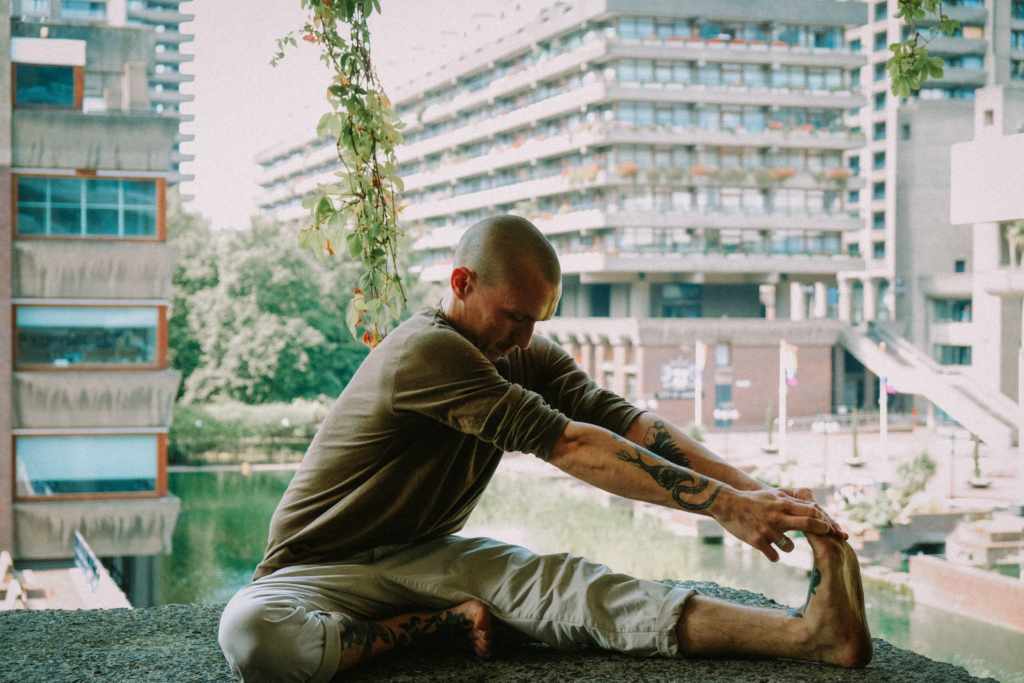BLOG:
Muscle Soreness After a Workout: Can It Be Prevented?

We’ve all been there. You’ve gone to the gym for the first time in a while, or you’ve really upped your game and lifted more than you usually would. Now you can barely lift your arms above your shoulders, or you clutch on to the railings for dear life when you’re walking down the stairs. The struggle is real.
So, what can you do about post-workout muscle soreness? Let’s sort the fact from fiction when it comes to pain and gain.
Is it normal to feel pain in certain muscles when you first start exercising?
Some muscle soreness after a workout is normal. But the pain should not be too horrific! If we consider a pain scale of 0 – 10, a maximum of 3 out of 10 is acceptable.
Another useful rule is that you can expect to feel equal pain on each side of your body. Muscle pain that is much worse on one side than the other may indicate something more significant than muscle soreness and therefore needs to be watched carefully and assessed by a professional if persistent.
It is important to note that muscle pain is not a great indicator of the quality of your workout. So, forget about “no pain, no gain!” You can still do an effective workout without finding it hard to walk for days afterwards.
What causes sore muscles after exercise?
Current theories suggest that “delayed onset muscle soreness” – or DOMS – is the result of an inflammatory response due to the microscopic muscle damage that occurs during exercise. It sounds bad, but it’s this microscopic damage that leads to the adaptation within the muscle – this is one of the reasons exercise is so good for us.
This damage stimulates the muscle to respond by laying down more muscle fibres (increasing muscle tone) and improving the blood supply to the muscle (capillarisation), so there is less damage next time we train. Capillarisation makes it easier for the heart to get oxygen to your muscles, which is how exercise makes you fitter and improves your blood pressure.
Should you exercise even when you're still sore from a workout?
You can still do some exercise even if your muscles are sore. However, repeating the same exercise that produced the sore muscles prior to recovery is a little risky and it probably won’t feel like a good idea anyway.
So, if you are suffering from upper body stiffness as a result of training your arms, chest, and back, some leg training will probably be fine. A good rule of thumb is to wait at least 48 hours before working on the same muscle group (e.g., train legs on Monday and Thursday and arms on Tuesday and Friday).
Low-intensity cardio training, such as a walk, may even help speed up the recovery by flushing oxygenated blood through the recovering muscles.
How can you minimise post-workout muscle pain?
If you’re just starting out or reigniting your fitness journey, the secret is to start slowly and increase the frequency, duration, and intensity of exercise gradually over a six-week period. This will minimise muscle soreness and allow the adaptation process to occur with minimal discomfort, meaning you can bounce back quicker (rather than not being able to move for a week after every workout).
Here are five recovery methods that you can do without worrying about interfering with exercise adaptation:
1. Keep your body moving
Active recovery means performing low-intensity exercise following a strenuous workout. It’s all about keeping your body moving to avoid stiffness after a challenging workout, as opposed to sitting around doing nothing all day. Some examples of active recovery include walking, gentle yoga, or leisurely swimming.
2. Stretch after your workout
Stretching is a fantastic way to boost your flexibility, reduce the risk of injury, and decrease muscle tension in your body. It can even help improve your performance the next time you work out and improve your mobility long-term!
3. Get a massage
Getting a massage is an excellent way to boost muscle recovery and help prevent future injuries. It corrects muscle strain, muscle tension, and even the effects of stress or poor posture. Massage is most likely to reduce DOMS when administered two to six hours after intense exercise.
4. Try foam rolling
Foam rolling is another beneficial recovery technique that can help to reduce DOMS and stimulate blood flow to the muscles you just trained. Although it can be quite painful while you’re doing it, foam rolling will help alleviate tightness, tension and reduce inflammation of muscle tissues, as well as help to increase your range of motion. If you’re not sure how to foam roll, try looking it up on YouTube! There are plenty of foam rolling routines and instructional videos you can watch to target different muscles in the body.
5. Nail your post-workout nutrition
Your post-workout nutrition can play an important role in recovery. After your workout, your body tries to rebuild its glycogen stores as well as repair and regrow your muscle proteins. It’s especially important that you eat protein and carbohydrates after your workout to improve both recovery and adaptation to exercise. You should also rehydrate by drinking lots of water to replace electrolytes lost due to sweat.
Want more tips on all things health, wellness and fitness? Follow us on socials!
The access token could not be decrypted. Your access token is currently invalid. Please re-authorize your Instagram account.


